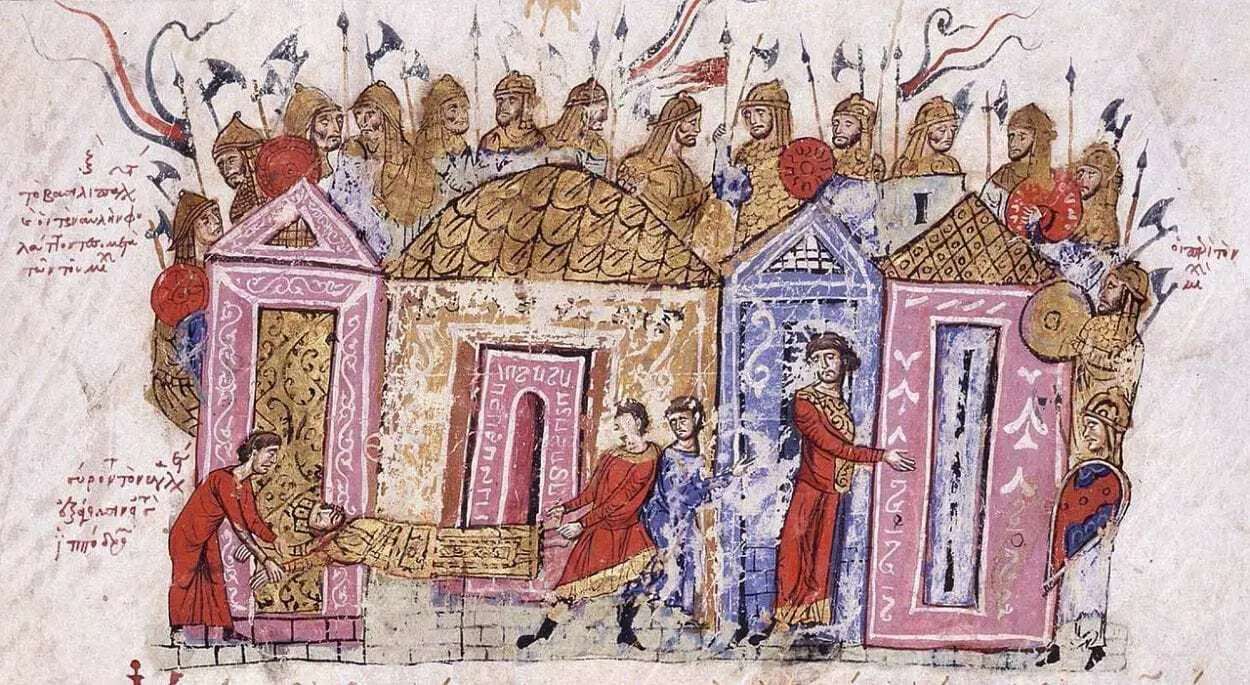The Varangian Guard was an elite unit that served as the personal bodyguards for the emperors of the Byzantine Empire (Eastern Roman Empire).
The guard was formed by Emperor Basil II in AD 988, consisting of Varangians from the state of Kievan Rus’ after Vladimi I of Kiev had agreed to convert Kievan Rus’ to Christianity.
The Varangians was the name given by the Greeks and the Rus’ people for the Vikings who settled among the many territories of modern-day Belarus, Russia, and Ukraine forming the Kievan Rus’. As early as AD 911, Varangians had fought as mercenaries in Byzantine naval expeditions, the Italian expedition of AD 936, and against the Arabs in Syria in AD 955.
The Varangian Rus’ had historically initiated several Rus’-Byzantine Wars, but a force of around 6,000 Varangians were sent to the Byzantine Empire as part of a military assistance agreement in compliance with a treaty set forth by Emperor Romanos II (Basil II’s father) forming the basis for the guard’s foundation.
In AD 989, the Varangians were led by Basil II himself against the rebel general Bardas Phokas at Chrysopolis, where their brutality and effectiveness in battle was noted, after pursuing the fleeing army and “cheerfully hacked them to pieces”.
The recruitment for the guard outside of the Empires borders was a tactical policy, as the guard members lacked any loyalty to factions other than the emperor or held any political ambition (a common issue historically with the Praetorian guard of the Western Roman Empire) that could be a threat to the Emperor’s position.
Over the next 100 years, the guard’s ranks would include Norseman from Scandinavia establishing a Norse cast until the late 11th century and would become the dominant entity of the guard’s ranks. The Laxdœla saga, informs that the Icelander Bolli Bollason was the first known Icelander or Norwegian in the Varangian Guard.

One other notable member of the guard was the future King Harald Sigurdsson III of Norway. During his service, Harald earned the titles of manglavites and spatharokandidatos but would desert his post to become the Norwegian King in AD 1046. After the death of King Edward the Confessor of England, Harald laid claim to the English throne and led a full-scale invasion but was defeated at the Battle of Stamford Bridge (that historians symbolise as the end of the Viking Age in Europe).
By the reign of Emperor Alexios Komnenos in the late 11th century AD, the guard began to see increased numbers of Anglo-Saxons (called the Englinbarrangoi – meaning Anglo-Varangians) after William the Conqueror had taken the throne of England during the Norman conquest, resulting in many Anglo-Saxon warriors losing their lands and seeking position elsewhere.
A resurgence of Norseman swelled the guards ranks when Harald Hardråde’s grandson, Sigurd I of Norway, went on the Norwegian Crusade to the Holy land and allowed his men to join the guard around AD 1110.
Contemporary sources refer to the guard as “axe-bearing barbarians” as being “from Thule” and were described by the 11th-century Byzantine historian, Michael Psellus thus “The whole group carry shields and brandish on their shoulders a certain single-edged, heavy-iron weapon”, which is understood to have been the Danish axe.
The last mention of the guard is in the Greek version of “The Chronicle of the Morea”, which states that a Varangian unit escorted the Prince of Achaia away to prison after the Battle of Pelagonia in AD 1259, although people who identified themselves as Varangians were mentioned in Constantinople as late as AD 1400.
Header Image – Varangian Guardsmen – Image Credit : Public Domain







